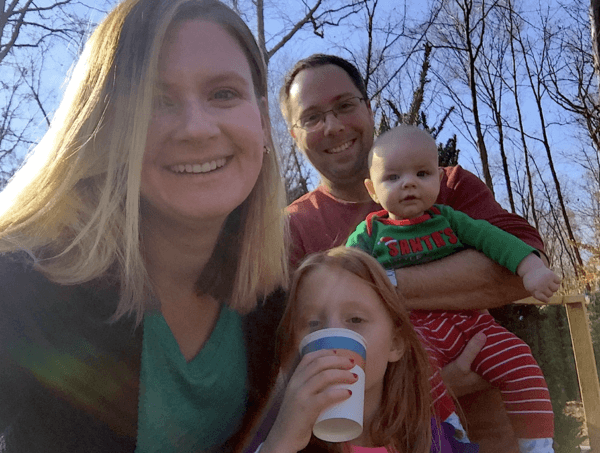Trends in Wellness Programs
March 14, 2018 in Wellness
By Jessica Waymouth
In our blog post from earlier this month, How Fit Is Your Company’s Wellness Program, we addressed the return on investment that organizations receive for investing in a wellness program. We also outlined how FMP built our own wellness program, following best practices and trends in corporate wellness. Successful programs engage leadership, align with the organization’s values and identity, include diverse offerings, and are made effective through engaging communications.
According to research for the Centers for Disease Control’s Workplace Health Research Network, increasing employees’ physical activity can create a healthier workforce, improve productivity, and decrease employees’ risk of disease. As a result, traditional wellness programs have always focused on increasing physical activity and promoting weight loss. Recently, though, the definition of wellness has expanded. In an article published by Forbes, researchers found that companies are adopting a more inclusive—and holistic—definition of wellness. Companies are offering everything from healthy food options to mindfulness programs, on-site yoga, financial advice, and sleep education. According to the author, “wellness initiatives that are important to one employee might not be as important to another. Every employee’s journey to a healthier lifestyle is unique, and it should be treated as such.”
Does your organization have a wellness program? Are you considering introducing one? Follow the four tips below to enhance—or reinvigorate—your wellness program.

Personalize Your Program
Katie Henry, a registered dietitian with b3 Wellness, says “Individuals in today’s society are more aware of the state of their health than ever before, especially with regards to nutrition. Wellness programs need to dive further into specifics to reach different segments of your employees.” To engage your employees and encourage their participation, tailor your wellness program to their specific needs. Do you have a young population that would benefit from information on annual wellness check-ups? Do your employees enjoy competitive team sports? By crafting a program that allows employees to set specific wellness goals based on their own interests and preferences, you increase the likelihood they will be engaged in the activities. At FMP, we focused our most recent wellness challenge on setting and keeping a 30-day goal. By enabling employees to set and track their own goal (e.g., drink more water, get more sleep), they were able to find an individual—and meaningful—way to engage in the challenge. Identify the elements that resonate most with your employees to enable them to meet their goals.
Move Beyond Physical Activity
FMP’s wellness program was designed to support multiple facets of well-being, including financial management, mental health, and nutrition. We include physical activity as part of our annual wellness campaigns and partner with local fitness studios to offer workout classes, but we don’t leave it there. We offer financial education sessions several times a year, host sessions on mindfulness and resiliency, and keep our kitchen stocked with healthy food options like fresh fruit and vegetables. Just like FMP, many organizations are expanding their wellness programs to address a broader definition of wellness. According to a study published in The Harvard Gazette, introducing new resources may give your employees the tools to become more resilient and reduce their stress levels. One of FMP’s clients, the National Science Foundation, includes a variety of employee assistance and health enhancement services within their wellness program, run by their Career-Life Balance team. These services include a health services unit offering proactive health maintenance, assistance in counseling services, and mindfulness sessions. By offering several relevant components, you open the opportunity for people to participate in the element that most interests them. Physical activity is just one part of the equation. Make sure you’re looking at your program holistically.
Integrate Technology and Data
According to the Society for Human Resource Management (SHRM), companies are increasingly integrating personal fitness trackers, health data, and web-based platforms to boost wellness program participation and pinpoint return on investment. Fitbit, the popular physical activity tracker, looked at more than 8,000 companies in a 2017 report and found that 35% of America’s Healthiest 100 Employers used wearables in their workplace wellness programs to gather meaningful metrics. Companies are also integrating online programs to offer scalability to field or remote employees, provide customized information, and reduce the cost of delivering a program. Using technology to drive outcomes gives employers and employees concrete metrics they can use to assess their progress and improve how they participate in the program.
Keep it Simple
Last but not least, even though you’re integrating a more personalized approach, offering an array of options, and leveraging technology and metrics, keep your program simple. Choose elements that everyone can engage in and make participation easy. According to an article in Fast Company on the future of corporate wellness, employees desire simple and uncomplicated wellness tasks. By keeping the barrier to entry low, you increase adoption and help employees manage their own health.
Using one or more of these tips may help increase your program’s effectiveness. If you integrate any of them, we would love to hear from you! Reach out to FMP at BD@fmpconsulting.com for ideas—we’re always looking for what’s next in work-life effectiveness and wellness.
About the Author: Meet FMPer, Jess! When she’s not building learning and development solutions or launching an onboarding program for our clients, she’s spending time with her family taking silly selfies. She loves to cook, explore DC, and do things outside.
